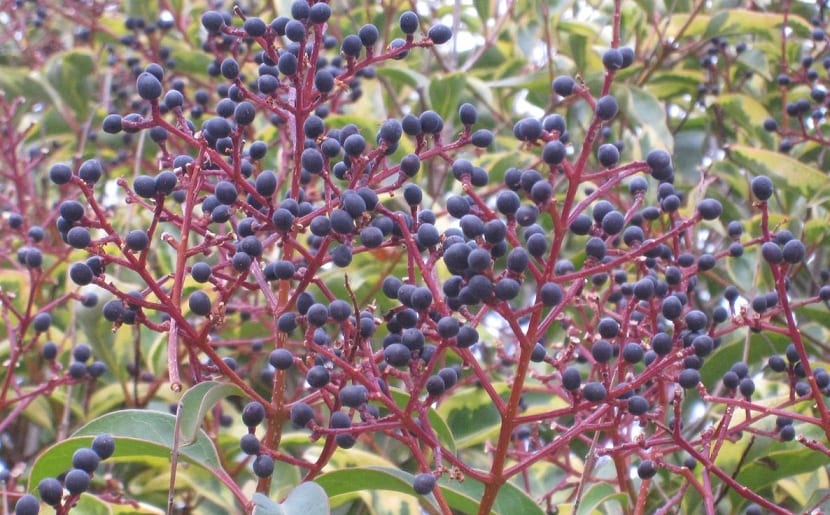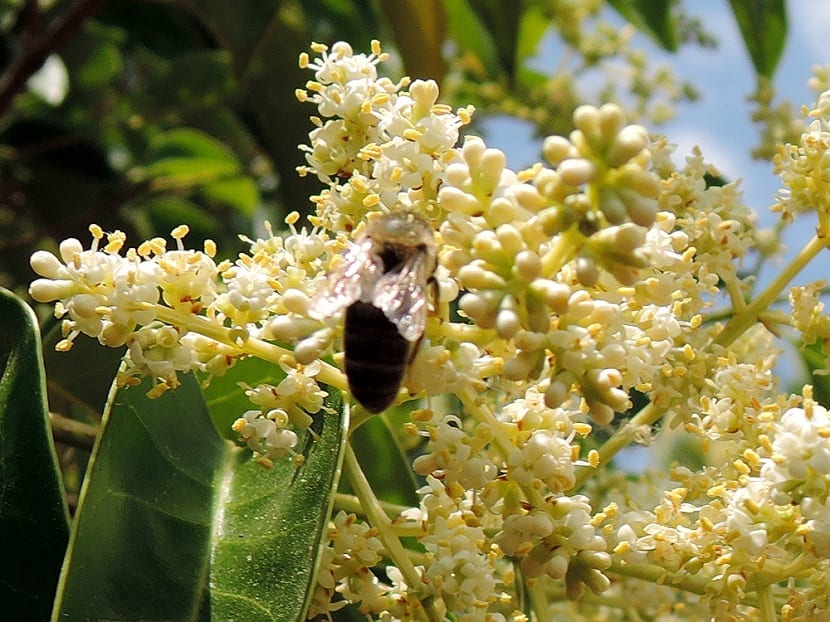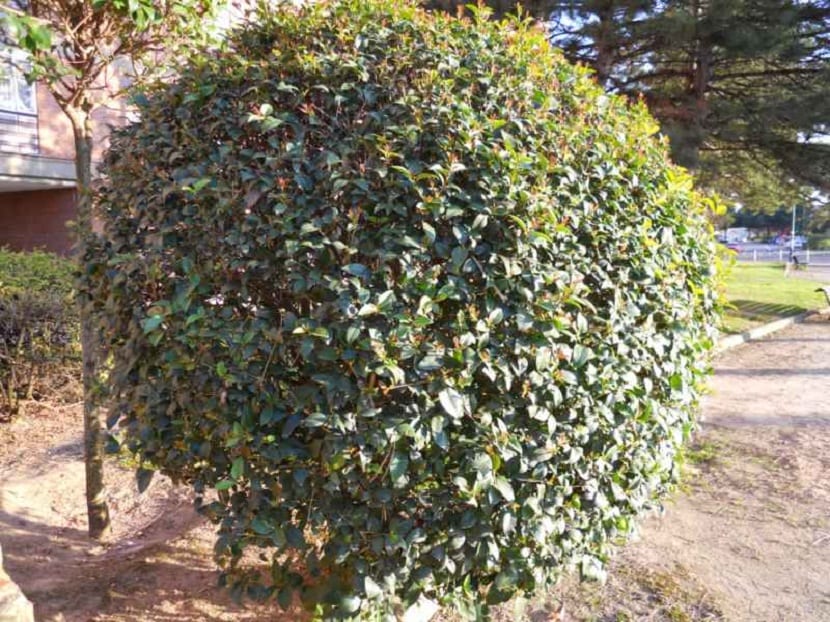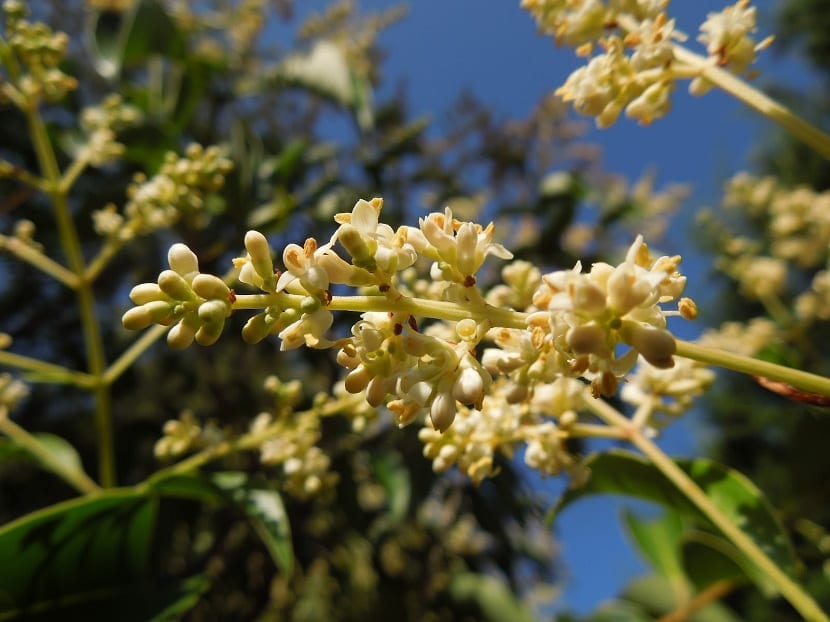
Some shrubs come in handy to increase the density of our garden. It is not only important to have showy flowers, but they must also be combined with the embrace of a larger bush that covers them. Today we are going to talk about a shrub whose uniqueness makes it widely used. It is the privet of Japan. Its scientific name is Ligustrum japonicum and it is perfect to combine with other flowers since its fruits provide a very attractive play of colors.
Here we are going to tell you the main characteristics of this shrub and how you should take care of it if you have it in your garden. Do you want to know more about the privet of Japan?
Key features

It is a small shrub that can grow up to 4 meters high.. Its glass is rounded and has a smooth rind. It is perfect to provide shade to those gardens whose orientation is sunny. Surely in the hottest summer season that contribution of freshness and humidity is appreciated. The color it has is greenish gray.
The leaves are evergreen and arranged alternately. They have an ovate shape and end in a point. To easily recognize them you just have to look the beam's brightness in the face of sunlight and its characteristic yellowish color on the underside.
As for its flowers, they are yellow and small. We can find it grouped as if they were clusters in a pyramidal shape. The flowering season is in July and August, when temperatures are highest. It bears small, fleshy fruits with a bluish-black color. They are berries similar to blueberries and are about the size of a pea. It is this bluish color that, together with the yellow color of the flowers and the bright green of the leaves, provides a perfect color contrast to combine with other flowers you have in the garden. The fruiting season begins in autumn and the fruits are kept for a long time.
It is also a perfect shrub to attract pollinating insects such as bees. The nectar of the flowers is highly demanded by these insects. This way we can have a better pollination of our plants so that the garden is always healthy. It is important to know that the berries that bear fruit are not edible. On the contrary, they are poisonous. Therefore, the contribution of the fruits is merely decorative to give a better play of colors.
Uses of privet from Japan

As we have already seen, this shrub is perfect to have the garden combined with better colors. We not only attract pollinating insects to contribute to the improvement in the reproduction of our plants, but also we also attract birds. And it is that the fruits that for us are poisonous, are perfect for these animals. When we are in the fruiting season, we can enjoy the song of the birds in our garden and a good natural touch.
It has a medium to fast growth and a great longevity. Many specimens can live for about a century without any problem. Of course, it is necessary that their care is ideal as we will see later.
Among some of its uses we find branches, wood and leaves. The branches are frequently used for the elaboration of these and cage. Especially a few decades ago, they were made by hand and it was a traditional artisan product. The wood of this shrub is quite hard and elastic, so it is quite good if we want to create turned objects.
It not only has artisan products, but it is also good for your health. Although its fruits are poisonous to humans, we cannot say the same about its leaves. They can be used for the preparation of infusions that come in handy for their astringent properties. It is frequently used against diarrhea. Although the consumption of the fruit is not suitable for humans, it is sometimes used to color certain wines.
As the privet is from Japan, its seeds are used there as a substitute for coffee. Undoubtedly the most used use of this shrub is that of ornamentation in gardens (click here if you want to know more uses of the privet).
Utility for garden decoration

In gardening, this shrub is used to the formation of hedges or to create some barriers against wind and noise. As we have mentioned before, although it is not a very robust tree, it helps to isolate us a bit from noise and generate a more pleasant environment in the garden. The flowering is scented, so it will take us to dream places when we are enjoying its shade in summer away from noise and annoying wind.
It is widely used in the ornamentation of parks and gardens because it grows quite quickly and its care is not complicated at all. If pruned properly, they can make great hedges.
Caring for the Ligustrum japonicum

This bush it is quite good withstanding the cold and frost, so we will not have problems having to protect it at night in winter. It is not demanding when sowing it, since it develops well in any soil. If we had to choose, the soil type the most optimal is the freshest and most sandy one.
It survives better in humid environments and it withstands well the areas near the coast and pollution. Although not much, it can withstand some drought. However, we will monitor the risks well to avoid possible problems.
It needs a pruning to get rid of those withered parts and maintain good health. It will warn us that we have not pruned it, generating very perfumed yellowish-white flowers.
For its propagation, can be multiplied by seeds or some varieties by cuttings, grafts and layering. To transplant it is better with the bare root. The multiplication time is in autumn and you have to wait, once the seeds are sown, an average of 3 months, as long as the temperature is between 0 and 10 degrees.
I hope that with this information you can take good care of your privet from Japan and enjoy it in your garden.
It is a good shrub. I like to shade.
Hello Pilar.
Without a doubt it is a very interesting plant for that use 🙂